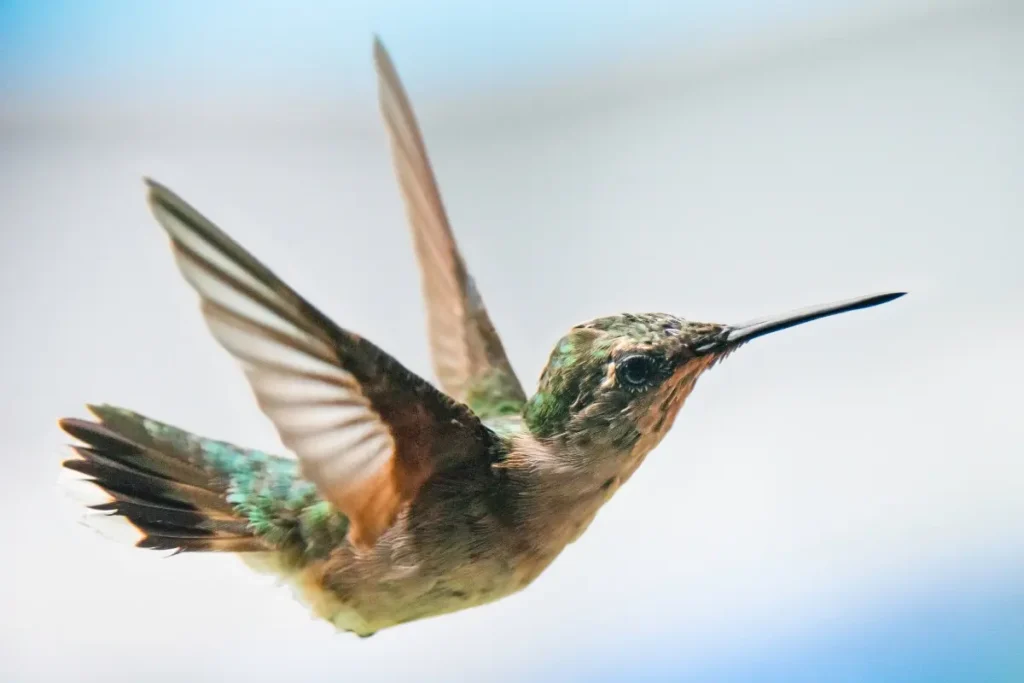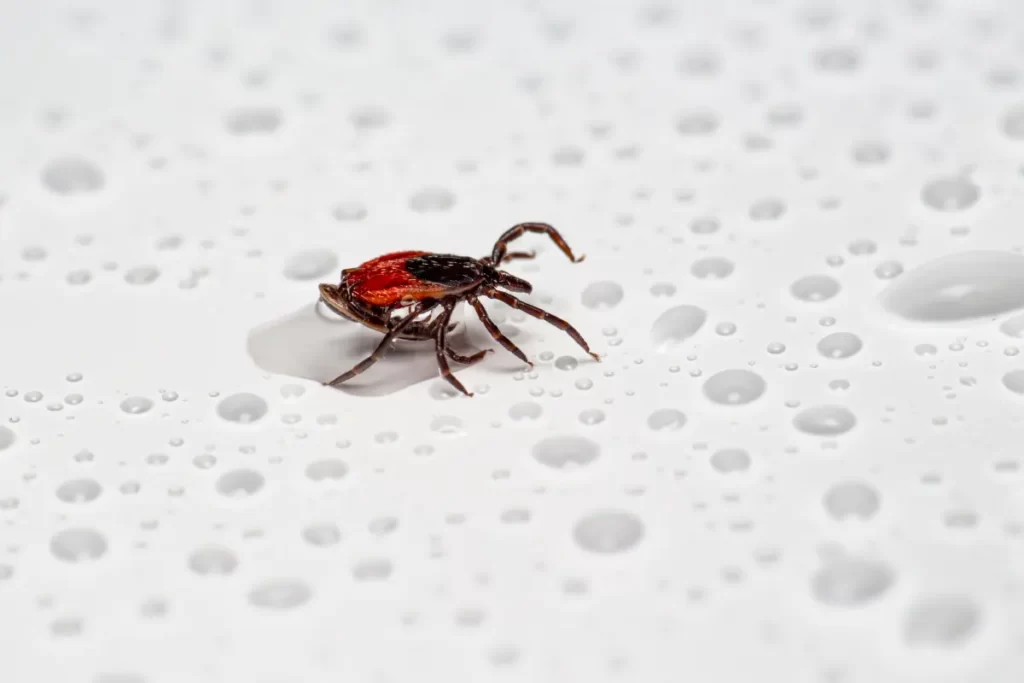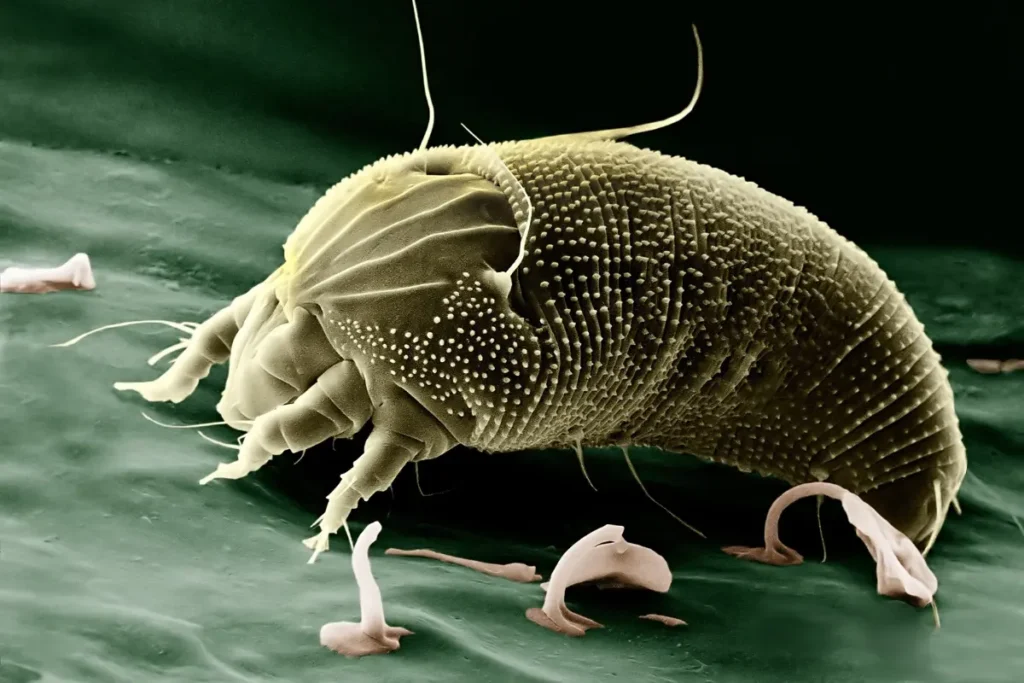Birds are the hosts for the germs that cause Lyme disease. Bird mites are thought to be carriers of numerous infections in people. Thus, the first question that came to mind was, “Do Bird Mites Carry Lyme Disease?”
No, Lyme disease is not carried by bird mites. The bacterium that causes Lyme disease is transmitted to people by tick bites. The bacteria Borrelia burgdorferi causes an infection that leads to Lyme disease.
Although Lyme disease is a year-round issue, tick season occurs from April through October. Read the entire article to learn more about bird mites, Lymph Disease, and the pathogen that causes Lyme Disease.
Lyme Disease
The infection that leads to Lyme disease in humans is caused by the bacteria Borrelia burgdorferi. The most common way to transmit spiral-shaped bacteria is through tick bites. The city of Lyme, Connecticut, gave Lyme disease its name. In 1975, Lyme disease was for the very first time discovered in the US.
Tick bites, particularly those from deer ticks that are black-legged and ticks that are western black-legged, which both carry the spirochete Borrelia burgdorferi bacteria, the bacterium can be spread by them due to which Lyme disease is caused to humans.
Yards, gardens, small grasslands, and wooded areas are where ticks prefer to live most of their life. Not all ticks cause Lyme disease because not all ticks are carriers of bacteria that cause Lyme disease. Depending on the area, it may be present in a minimum of only 1% of ticks to a maximum of 50%.
Birds Recognized As Lyme Disease Hosts

Birds have a propensity for long-distance migration and a tendency to divide their period of flight between different regions of the planet and patterns that are changing due to climate change.
Birds play an underappreciated role in transmitting Lyme diseases carried by ticks. A learning Machine was utilized in a recent study on birds that was published in the journal to identify bird species that could potentially spread the Lyme disease bacterium to feeding ticks.
So, no one has thoroughly investigated the ecological and evolutionary factors that determine which bird species are most likely to host the Lyme disease bacteria and propagate Borrelia burgdorferi worldwide.
First, understand which characteristics make a bird a suitable pathogen-host in outcasts and monitor species that potentially transmit diseases to humans through ticks.
Birds On The Flight Could Spread Lyme Disease

Finding out which birds carry the bacteria Borrelia burgdorferi that causes Lyme disease is essential.
Birds may represent an underestimated element of the ecology of Lyme disease as birds are considerably more capable of transporting infections over long distances than small-mammal hosts to transmit Lyme disease.
Of the total100 birds with ticks, 57 had spirochetes bacteria that cause Lyme disease. Out of which 13% of the tick’s larvae and over 25 % of their nymphs had Bactria burgdorferi spirochetes.
Dark-eyed bird juncos were found to have the highest number of spirochetes of Lyme disease bacteria among the 23 species out of 100 affected birds. Additionally, the golden-crowned sparrow contracted the disease more frequently compared to other species.
One of the most exciting findings of the above study was the discovery of a new type of Lyme disease bacteria, Borrelia Bissettii, which is closely related to but separate from Borrelia burgdorferi.
What Causes Lyme Disease Other Than Bird Mites?

The cause of Lyme disease is the bacteria Borrelia burgdorferi, while Borrelia mayonii is also occasionally involved. Black-legged ticks that are infected attack people to spread the illness.
Symptoms often include a fever, headaches, tiredness, and a skin rash resembling erythema migrans.
Flu-like symptoms could be brought on by the bacteria in people. If untreated, it may target numerous tissues, including the brain system and the heart, and it may also set off an immunological reaction that can result in Lyme arthritis.
Various body tissues could be harmed if you do contract the infection and the bacteria go through the bloodstream. An inflammatory disorder could be developed by Lyme disease due to which several systems could be impacted including your skin, joints, nervous system, and organs later on if untreated.
Can You Get Lyme Disease Without Being Bitten
Nymphs, immature baby ticks, transmit bacterial infections that result in Lyme disease in people. Nymphs feed primarily in the humid spring and summer months and are difficult to spot with the naked eye because they are smaller than 2 mm in size.
Adult Ticks can also spread the bacteria Borrelia burgdorferi that causes Lyme disease, even though adult ticks are larger than baby nymphs and more likely to be. The cooler months are when adult Ixodes tick activity is greatest.
Ticks can adhere to any part of a person’s body and bite it to transmit Lyme disease, although they are most frequently found in places where it is difficult to see them with the naked eye.
The tick remains connected to the human body even after biting for at least 36 to 48 hours before transferring the Lyme disease bacterium.
Is Bird Mite Contagious?

Yes, bird mites can be contagious. Bird mites can spread from a bird to a human through direct contact. They might even bite you. On the other hand, humans are not viable bird mite hosts. They will be unable to live and reproduce.
There are three bird mites, and they all have different effects on their hosts.
Bird mites: Starling mites feed on birds’ blood, flesh, and feathers. The bird’s skin becomes irritated and itchy as a result of this.
The second kind of bird mites, called Scaly Leg Mites, are found in featherless bird skin, such as the ceres, the fleshy area above the beak, the bird’s legs, and its feet.
The bird’s lungs and airways are affected by the third type of bird mite, Airsac Mites. These mites, which cause respiratory problems, inhabit the wet airways.
What Are The First Signs Of Having Lyme Disease?
The best defense against Lyme disease infection is to avoid tick bites, but if people do get bitten, watch out for these early signs of Lyme disease:
- A little red bump is likely to develop at the sight of any tick bite.
- One of the most prominent signs of Lyme disease is erythema migrans, an enlarging rash.
- A symptom of chronic Lyme disease is fatigue.
- The severity of severe headaches can change, and stiff necks may accompany them.
- Lyme illness can simultaneously raise fever and give chills.
- People can suffer from joint discomfort or sore muscles if they have Lyme disease. The knees are most likely to be damaged.
- Bulleted lymph nodes are located in the groin, under your chin, on either side of the neck, and in both armpits. If they hurt or are sensitive to touch or feel more significant than usual, they are probably swollen.
Conclusion
Bird mites do not transmit Lyme disease. Tick bites are the main way the bacteria that causes Lyme disease is spread to people. Lyme disease is brought on by an infection brought on by the bacterium Borrelia burgdorferi.
Bite-related bacterial infections in people are brought on by immature and young ticks called nymphs. Nymphs feed primarily in the humid spring and summer months and are difficult to spot with the naked eye because they are smaller than 2 mm in size.
But Lyme disease is not carried by bird mites. There is no concrete proof that bird mites can transmit disease to people. Bird mites cannot reproduce on human skin, thus, they cannot maintain a continuing infestation in a home.
Although bird mites feed on their hosts’ flesh, it is unknown if they can transmit infectious diseases from one bird to another or from one bird to a human or animal.
References
The Lyme Disease Pathogen Has No Effect on the Survival of Its Rodent Reservoir Host
Coburn J, Garcia B, Hu LT, Jewett MW, Kraiczy P, Norris SJ, Skare J. Lyme Disease Pathogenesis. Curr Issues Mol Biol. 2021;42:473-518. doi: 10.21775/cimb.042.473. Epub 2020 Dec 23. PMID: 33353871; PMCID: PMC8046170.


